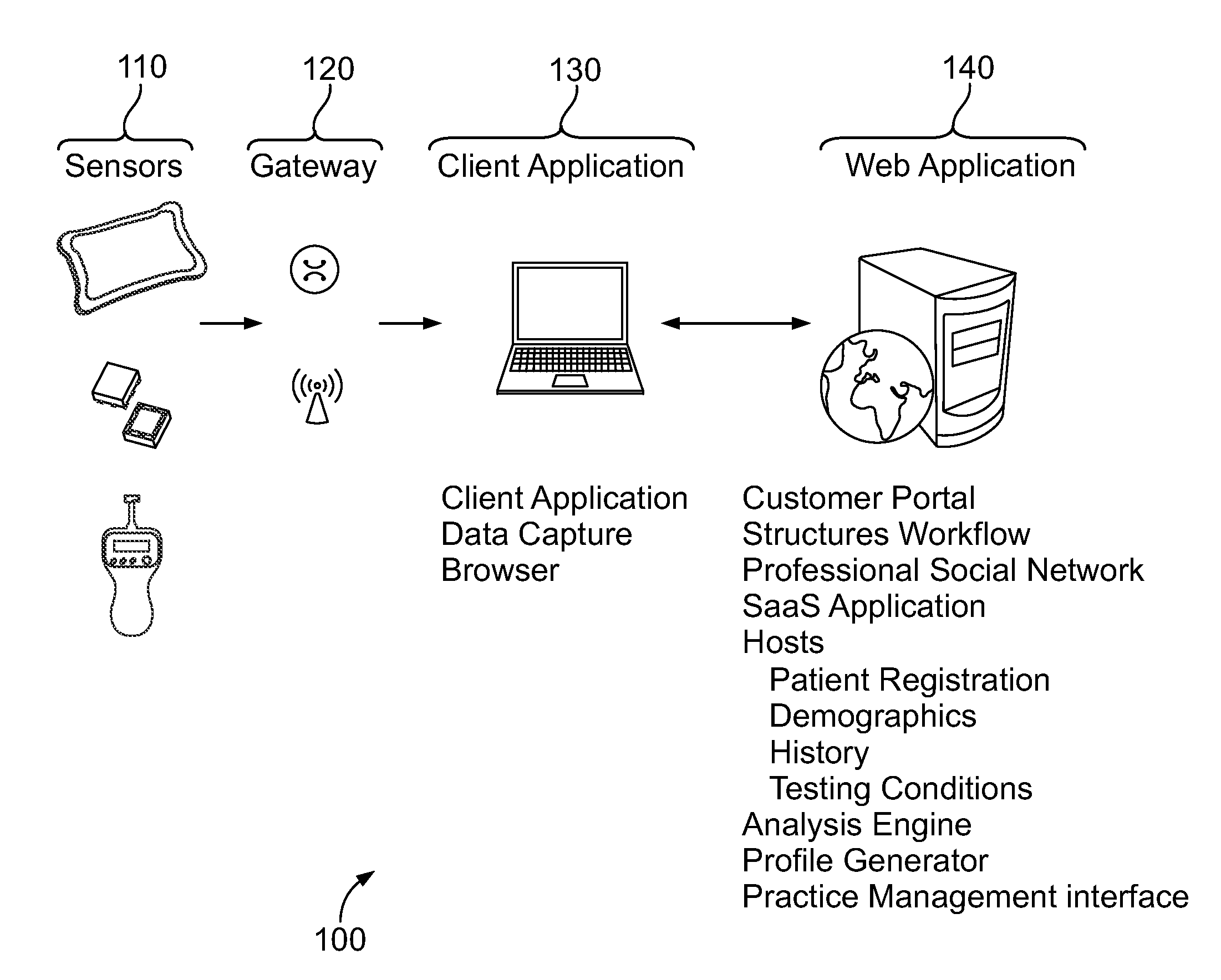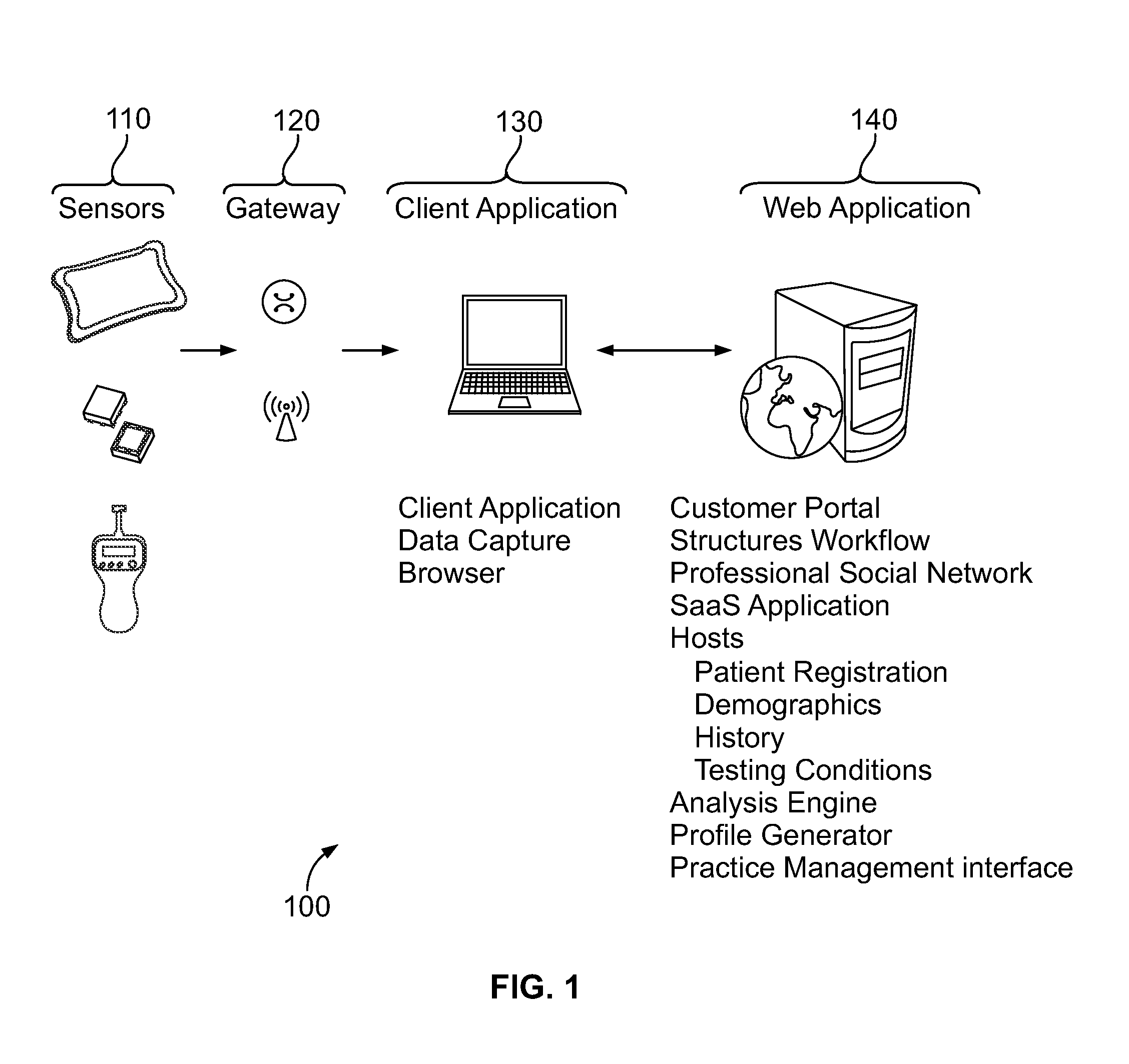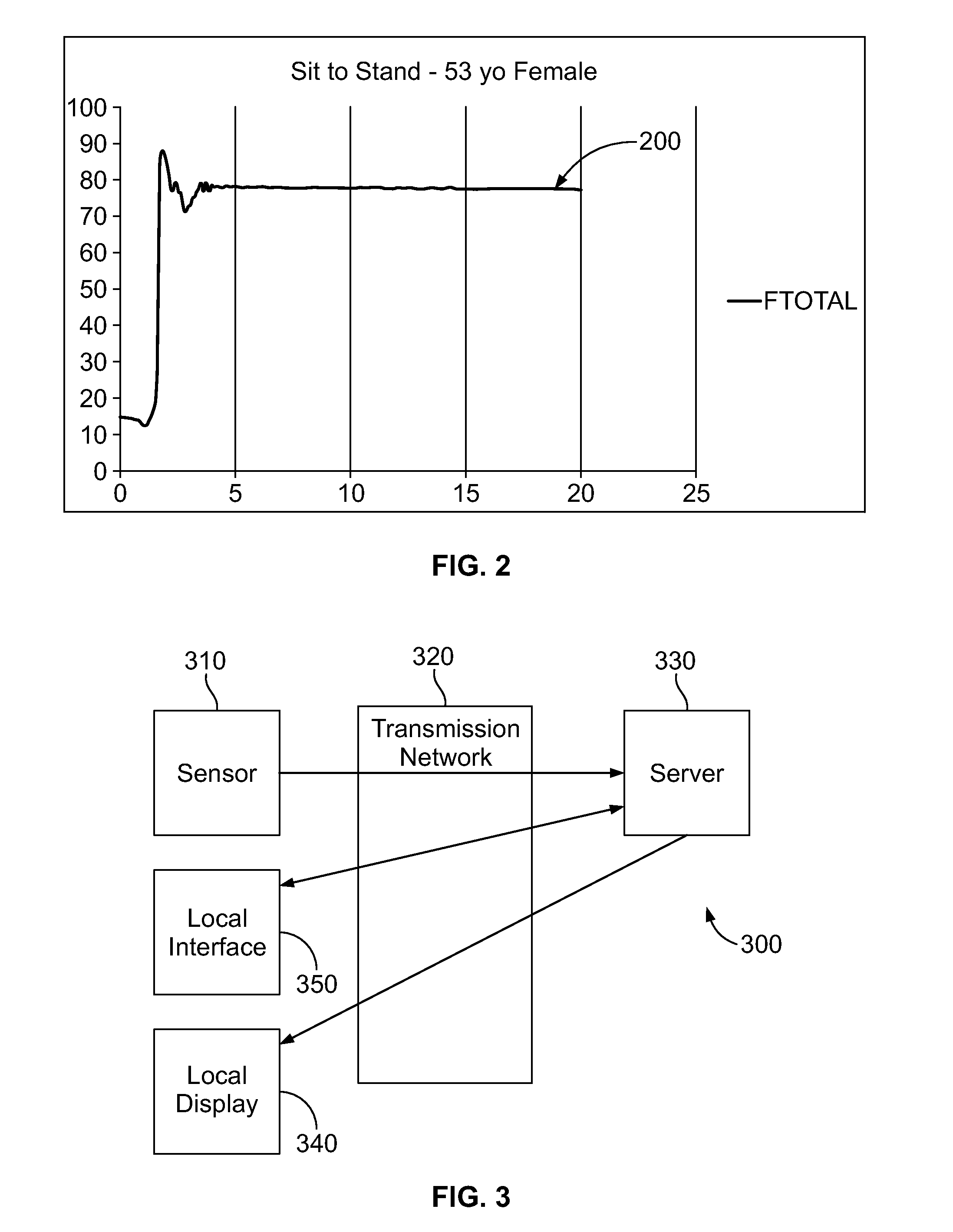Systems and methods for use in fall risk assessment
a technology of fall risk and assessment method, applied in the field of assessing fall risk, can solve the problems of widespread problem, increased risk of individual fall, persistent patient fall, etc., and achieve the effect of increasing the risk of falling, and preventing or reducing the incidence of patient falls
- Summary
- Abstract
- Description
- Claims
- Application Information
AI Technical Summary
Benefits of technology
Problems solved by technology
Method used
Image
Examples
example 1
[0082]A subject stands on a horizontal ‘balance board’ (a plate with a number of load sensors so that shifts in force in the X-Y plane of the balance board may be detected; the time constant of the device should (preferably) allow data to be acquired at a frequency greater than 20 Hz. Once the subject is in position, tasks such as ‘maintain static position for 1 minute’ (although other time periods may be employed such as 3 s, 5 s, 10 s, 15 s, or 30 s) or ‘close your eyes and maintain static position for 1 minute’ (although other time periods may be employed such as 3 s, 5 s, 10 s, 15 s, or 30 s) or ‘with your eyes closed, lift your arms to horizontal in front of you and hold this position for 1 minute’ (although other time periods may be employed such as 3 s, 5 s, 10 s, 15 s, or 30 s) are performed and data from the load sensors is captured via a standard (digitizing) interface and transmitted wirelessly to a gateway.
[0083]The data stream may be immediately displayed to both the su...
example 2
[0095]A balance board, as in the previous example, is wirelessly linked to a computer hosting data acquisition software and a user-guiding test protocol which defines specific tasks. On a signal or the instruction of a tester (such as a nurse) a subject attempts a sit-to-stand motion sequence starting with both feet on the balance board and ending with the subject in a stable standing position. (alternately a stand-to-sit task or other modified task may be specified). The data set for the test may be defined either from an arbitrary start time or alternately by a defined time series counting back from the end of the test sequence. The latter avoids start transients and is generally more easily determined in a hospital or clinical setting.
[0096]Several repeats of the defined task (sit-to-stand) may be performed. Immediate feedback from the sensor system is optional and generally helpful to both the patient and therapist since it provides verification of task performance.
[0097]Perform...
example 3
[0104]In a practical (clinical) setting it is desirable to include information from a patient's musculo-skeletal evaluation record (including fall risk) in their medical record and to be able to record and annotate management and billing records. It is clear to a person skilled in computational management of data that such data may readily be passed back to or from the system described above and that such a system may be configured to the requirements (privacy and security) of medical records management. Accordingly in an embodiment of the present invention, the system permits access to and from medical and management data systems for reporting purposes and may be integrated with such systems.
[0105]Although only a few exemplary embodiments of this invention have been described above, those skilled in the art will readily appreciate that many other equivalents are possible without materially departing from the novel teachings and advantages presented herein. Accordingly, all such mod...
PUM
 Login to View More
Login to View More Abstract
Description
Claims
Application Information
 Login to View More
Login to View More - R&D
- Intellectual Property
- Life Sciences
- Materials
- Tech Scout
- Unparalleled Data Quality
- Higher Quality Content
- 60% Fewer Hallucinations
Browse by: Latest US Patents, China's latest patents, Technical Efficacy Thesaurus, Application Domain, Technology Topic, Popular Technical Reports.
© 2025 PatSnap. All rights reserved.Legal|Privacy policy|Modern Slavery Act Transparency Statement|Sitemap|About US| Contact US: help@patsnap.com



